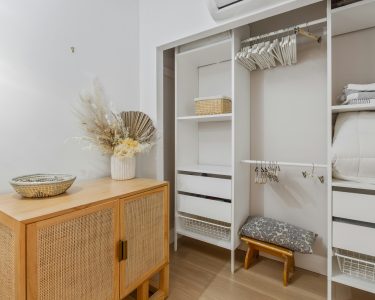The kitchen has long been celebrated as the heart of the home, a central hub where families gather, meals are prepared with love, and memories are made. It’s a place rich in ambiance, bustling with activity, and filled with enticing aromas that draw everyone to its cozy confines. However, the kitchen is also a practical space where the challenge of managing and storing the bounty of household provisions—especially in times when budget-conscious shoppers stock up on sales—can lead to clutter and chaos. Balancing the warmth and social nature of the kitchen with functional storage solutions is a task that many families face, particularly as they seek to accommodate the changing needs of senior family members.
The concept of a permanent pantry emerges as a sophisticated solution to these storage woes, promising to transform the kitchen from a cluttered space to one of orderly calm. The introduction of a pantry not only addresses the need for additional storage but also enhances the kitchen’s role as a welcoming gathering place. For larger kitchens, options like islands can serve dual purposes, providing storage while maintaining the kitchen’s role as a family hub. Beyond mere storage, the thoughtful design of a kitchen pantry—considering what items will be stored and how they contribute to the kitchen’s daily function—reflects a deeper understanding of how modern homes adapt to the diverse needs of their inhabitants, including seniors relying on in-home care for a comfortable and independent lifestyle.
The Solution: A Permanent Pantry
A clutter-free world is an ideal many of us strive for, yet achieving it within the confines of a kitchen seems a perpetual struggle. The introduction of a permanent pantry presents a promising solution. For those graced with spacious kitchens, an island can offer relief by housing pots and pans, or alternatively, hanging them can also reclaim precious cabinet space. But the quest for additional storage transcends the needs of the gourmet chef; even the most basic cook requires extra room to bring culinary creations to life for their family.
Designing Your Kitchen Pantry
Embarking on the pantry design journey begins with self-reflection on your storage needs. Identifying what will inhabit this space—be it appliances to clear counter space, delicate china, or your bulk purchases—shapes the pantry’s structure. For wine enthusiasts, incorporating wine racks or even a small cellar could be appealing. The aim is to devise a pantry that not only addresses the clutter but does so in a manner that keeps essentials within easy reach.
Tailoring Storage Solutions
Storage needs vary greatly, from the desire to showcase items on shelves to simply wanting a consolidated view of stock. Whether it’s cubbyholes for cookbooks, shelves for appliances, or a large closet to hide away bulkier items, consulting with a professional pantry design consultant can optimize kitchen efficiency. Innovative storage solutions like adjustable shelving or high-density units that slide and hide can significantly expand your storage capability.
The Versatile Pantry
Once the pantry’s function and form are determined, ensuring its aesthetic coherence with the rest of the kitchen is crucial. Whether your taste leans towards rustic charm or modern elegance, the pantry can be customized to complement your kitchen’s style. From wooden bins for vegetables to sleek, modern shelving, today’s pantry options extend far beyond basic utility to become a statement piece of the kitchen.
In-Home Care and the Senior-Friendly Kitchen
As our population ages, the concept of in-home care has become increasingly relevant. Seniors, who make up a significant portion of those opting for in-home companion care, benefit immensely from kitchens designed with care and accessibility in mind. A well-organized pantry, with its emphasis on ease of access and safety, plays a pivotal role in enabling seniors to maintain independence and quality of life. The thoughtful integration of storage solutions can aid in minimizing the risks associated with mobility and visibility challenges, ensuring that the kitchen remains a safe and enjoyable space for all family members.
Creating a kitchen that caters to the diverse needs of a family, particularly those of seniors under in-home care, is about blending functionality with personal taste. It’s about crafting spaces that not only facilitate the practical aspects of cooking and storage but also support the well-being of its users. In this light, the pantry becomes more than just a place for storage; it’s a cornerstone of a home that nurtures independence and enriches the lives of those within it.
By addressing these aspects, the journey towards a clutter-free, efficient, and senior-friendly kitchen becomes a reality, proving once again that the kitchen truly is the heart of the home. In an age where in-home care becomes a consideration for many, designing a kitchen that supports this choice enhances not only the functionality of the space but also the quality of life for its senior inhabitants, making every meal prepared and shared a testament to the care and thought invested in its creation.





